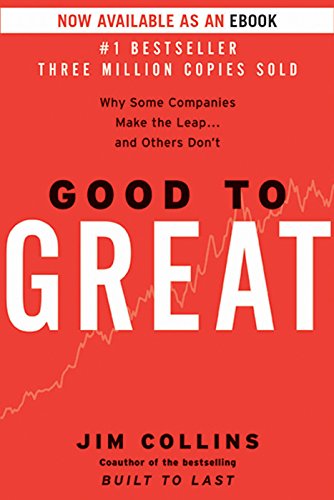

This article is an excerpt from the Shortform summary of "Good to Great" by Jim Collins. Shortform has the world's best summaries of books you should be reading.
Like this article? Sign up for a free trial here .
What are the characteristics of a good leader? Further, what are the qualities of a great leader?
In his book Good to Great, Jim Collins unearths the qualities of the greatest leaders of business. We’ll cover the defining characteristics of a good leader.
Characteristics of a Good Leader
Characteristic #1 of a Good Leader: Self-Effacing, but Resolute
The first characteristic of a good leader is that he or she tends to avoid the public eye, has a reserved demeanor, and even tends to shyness. But while not ambitious for themselves, they are ambitious for the company – they never back down from taking responsibility or making a difficult decision.
For example, Darwin E. Smith, CEO of Kimberly-Clark from the 70s through the 90s, was no darling of reporters: He wore unfashionable suits, was uncomfortable in interviews, and preferred the company of manual laborers to that of fellow executives. Rather than take flashy vacations to exotic locales, Smith spent his time off on his property in rural Wisconsin, performing hard labor himself. This is a quality of a great leader.
Smith’s “aw shucks” demeanor, however, belied a rigorous and gutsy businessman. Shortly after he became CEO in 1971, Smith and his team determined that coated paper, which constituted the core of Kimberley-Clark’s business, featured both little opportunity for growth and poor competition. He made a momentous decision: to sell the company’s paper mills and go all in on consumer paper goods, where growth potential was significant and competition fierce.
The decision was panned by industry analysts, but it paid off: During Smith’s 20-year tenure as CEO, Kimberly-Clark produced cumulative stock returns 4.1x the general market return.
Characteristic #2 of a Good Leader: Prepares the Next Generation of Level 5s
The second characteristic of a good leader is that he or she prepares the next generation of leaders. Because Level 5 leaders subsume their egos to a single objective—making their companies successful—they are compelled to groom successors to ensure their companies’ continued success.
David Maxwell, CEO of Fannie Mae in 80s, for example, took over a company losing $1 million a day and transformed it into one earning $4 million a day in profit. Rather than cling to the job, Maxwell retired at the height of his powers in 1990, leaving the company in the able hands of his chosen successor, Jim Johnson.
Maxwell’s “company-first” mentality continued even into his retirement. When his generous retirement package came under fire in the U.S. Congress, Maxwell told Johnson to redirect the amount still to be paid—about $5.5 million—to the Fannie Mae foundation so that it could help low-income Americans secure mortgages. For Maxwell, the company’s reputation was more important than his personal gain. This is another quality of a great leader.
Characteristic #3 of a Good Leader: Comes from Within the Company
The third characteristic of a good leader is that he or she comes from within the company. Good to Great leaders were often promoted to chief executive rather than hired from outside.
Good-to-great executives Darwin Smith (Kimberly-Clark), Colman Mockler (Gillette), and George Cain (Abbott Laboratories) all emerged from within the ranks of their respective companies, whereas comparison CEOs like Al Dunlap (Scott Paper) and Lee Iacocca (Chrysler) were brought in.
Characteristic #4 of a Good Leader: Takes Blame and Deflects Credit
The fourth characteristic of a good leader is that he or she takes responsibility for problems and gives credit to others. In Collins’s interviews, good-to-great CEOs credited their colleagues—or just dumb luck—for their companies’ successes, whereas comparison leaders were quick to blame outside factors or others for their companies’ failures.
Good-to-great leaders will “look out the window” when assigning credit for their successes, whereas lesser leaders will “look in the mirror.” This is a crucial quality of a great leader.
A prime example is Joseph F. Cullman, CEO of Philip Morris in the 60s and 70s, who watched Marlboro become the most popular cigarette brand in America. Despite leading the company to returns 7x the general market, Cullman staunchly refused to take credit for the company’s success, instead pointing to predecessors, contemporaries, successors—and luck. In fact, at the request of his admiring colleagues, Cullman wrote a book originally intended for their enjoyment only. The title? I’m a Lucky Guy.
———End of Preview———

Like what you just read? Read the rest of the world's best summary of "Good to Great" at Shortform . Learn the book's critical concepts in 20 minutes or less .
Here's what you'll find in our full Good to Great summary :
- The 3 key attributes of Great companies
- Why it's better to focus on your one core strength than get spread thin
- How to build a virtuous cycle, or flywheel effect, in your business






